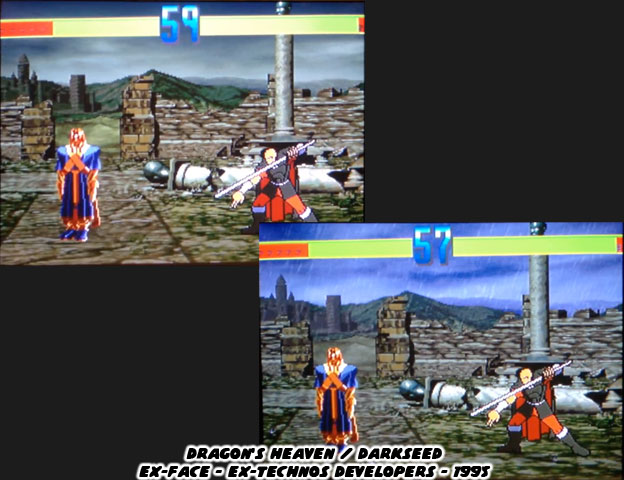
The board NeoTurfMasta showed off was for a cancelled SNK fighting game. It had a working title of Dragons Heaven or DarkSeed. The game was created by Kengo Asai. Kengo had worked on The Last Blade (1997), the spiritual successor to the Samurai Spirit / Shodown series. Prior to that he worked on Voltage Fighter Gowcaiser (1995), featuring the character designs of Masami Obari. Kengo did an interview with ITMedia about the game after it turned up. In that interview he mentioned a few interesting things about the title. The working title was Darkseed but the studio couldn’t get the rights to it so they started calling it Dragon’s Heaven. Around that time a number of Japanese studios, animation and manga artists as well, were into dark fantasy.
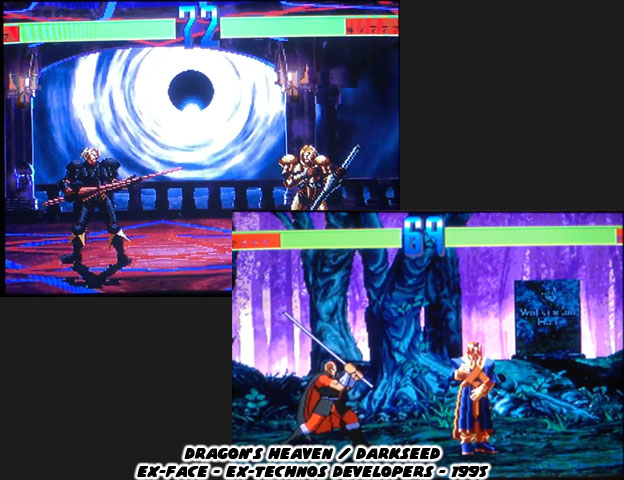
The team that was working on the game was made up of Ex-Face, Ex-Technos developers. They started work on the game while they were finishing development on Voltage Fighter Gowcaiser. The game had gone a good ways while in production for the two times that it was suspended due to budget issues. It was officially cancelled in 1996. The majority of the cast had been designed with almost all of the characters being playable if not having a series of moves and animations. Detailed stages had been created that took players around a unique fantasy world, one with heavy western influences.
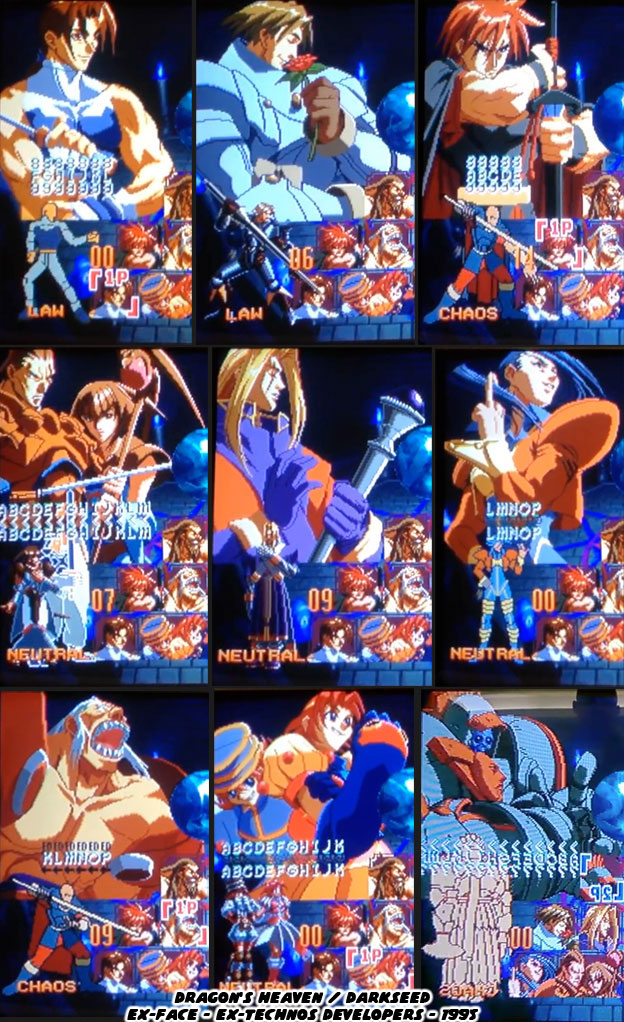
This game was weapons-based, again, like Samurai Spirits. The cast was not entirely made up of sword fighters. Instead of martial arts masters these characters ranged from rogue to cleric, from traditional knight to supernatural war machine. In essence they were classes, just like a fantasy role-playing game. The game was layered in some amazing details, the stages shifted between day and night. There were even weather elements such as rain programmed in the engine. It was an ambitious title that had features that no other fighting game before or since had.
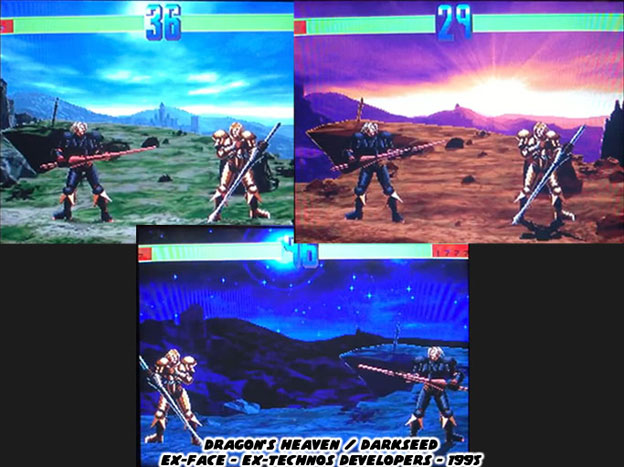
The entire morning, noon and night level design was more than an aesthetic choice. Mr. Asai actually had plans for creating different move sets and abilities for the characters depending on their alignment. They could be Chaotic, Lawful or Neutral. Chaotic and Lawful had the strongest attacks but not necessarily strongest defenses against their polar rivals. Neutral versions were good all-around but did not excel in any one field. The time of the day actually had an affect on how strong their attacks were. Lawful was strongest in the morning and chaos at night. The benefit of being a neutral was that your moves and attacks were consistent regardless of the stage.
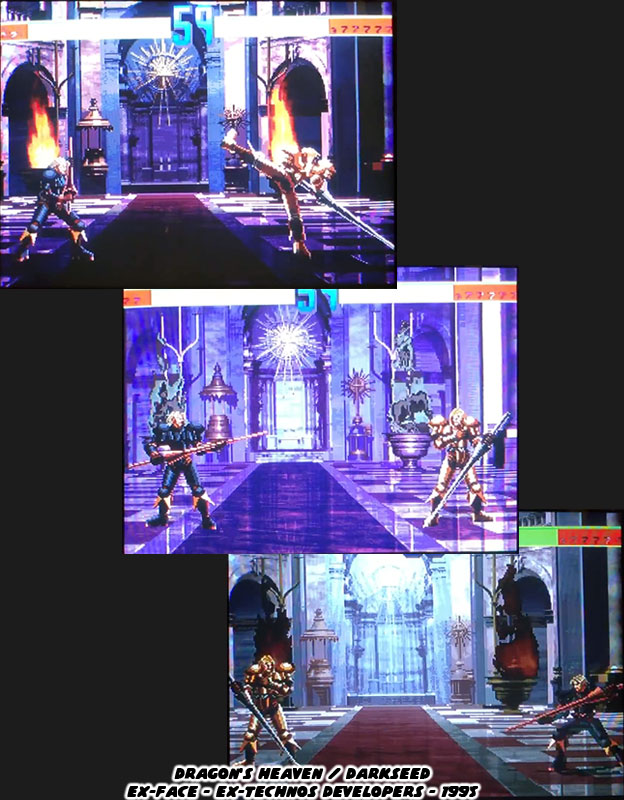
It wasn’t enough to simply call a character Lawful or Chaotic. The designers actually created unique sprites and animations for each class. For example take the character Tear and her companion Wolf. In the Good alignment the wolf is more passive, he is seated and waiting for a command. By contrast the Chaotic version is at the side of his master and growling. Even the stance of Tear changes from cautious to ready for battle. This is a stark contrast to most fighting games where the designers only worked on creating color pallet swaps for the cast.
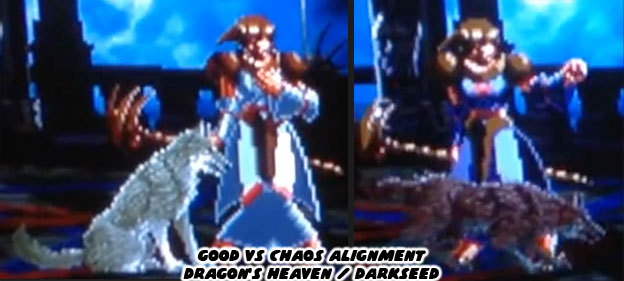
Imagine having to design different sets of attacks and special moves for the same character depending on their alignment. It would have been a nightmare from a planning and programming perspective, let alone from a balance standpoint. It was nonetheless something ambitious that many game developers don’t even consider for modern fighting game remakes. But just so you know the designers did create pallet swaps for each alignment as well. This was an intense amount of work for the team trying to get a game out and stay competitive in the market.
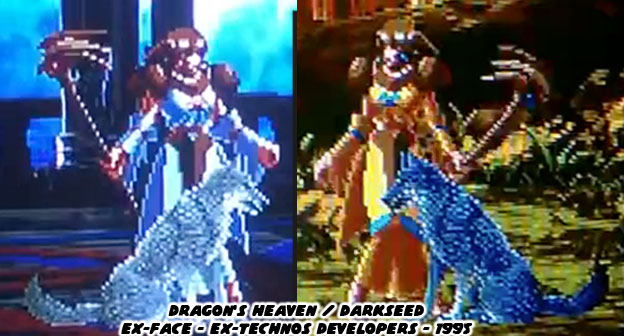
Tear and Wolf were the main characters in Dragon’s Heaven. The game appeared during a time when studios had experimented with having a wolf as a supporting character. Sega gave a wolf companion to their iconic ninja character Shinobi in the 1989 arcade sequel Shadow Dancer. A year later Studio Ghibli released the film Princess Mononoke, which again featured wolves in supporting roles. SNK had featured a large dog, Poppy, as the partner of the ninja Galford in Samurai Spirits / Shodown in 1993. Rera and her wolf Shikuru appeared in Samurai Spirits 5 in 2003. Rera was an evil (more like chaotic) version Nakoruru, born from her subconscious. This character had been hinted about in Samurai Shodown II back in 1994, a year before the publisher started work on Dragon’s Heaven.
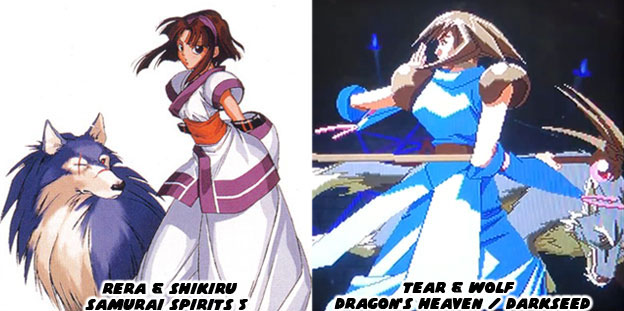
All of the maiden and wolf characters in other Japanese games and films were merely coincidence. The inspiration behind Mr. Obari’s game came from much earlier USA source. He remembered a film where the male and female characters could never be together because during the day the man was a human and the woman was a hawk. At night the man became a wolf and the hawk became a woman. Kengo did not recall the name of the film when he was interviewed, but it was the 1985 movie Ladyhawke.
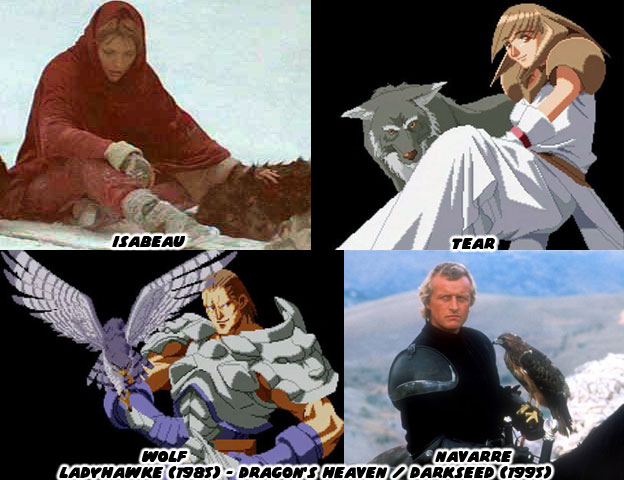
Captain Navarre played by Rutger Hauer and Isabeau played Michelle Pfeiffer were the star-crossed lovers. An evil bishop was jealous of the two and cursed them to change into animals so that they might never be with each other as humans. SPOILER: Captain Navarre swore revenge and when the opportunity presented itself to assassinate the bishop and lift the curse, thanks to a well timed solar eclipse, he went for it. In hindsight Mr. Obari thinks that he could have come up with something better for his first original fighting game. That is a tough case to make considering all of the fresh game play elements he had introduced in this title. Aside from Tear and Wolf there was a very interesting heavy hitter in the planning stages known as Headcounter.
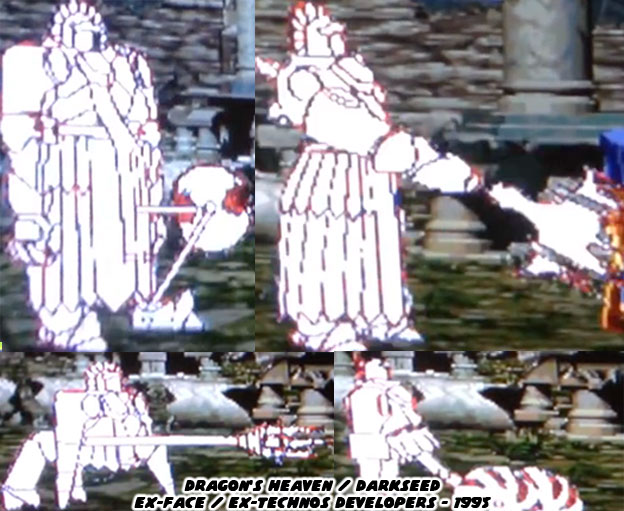
Headcounter had three classes to choose from just like the other characters. He was not some sort of armored knight but instead a skeleton trapped in an animated suit of armor. The look of Headcounter did predate the appearance of the Undead Hero from the 1996 Treasure game, Guardian Heroes, for the Sega Saturn console. What made this new fighter unique was how much his visual appearance changed in between the classes. In a neutral form his armor was smooth but in a chaotic form his armor turned spiky. This character was huge, about the size of an Iron Maiden. But this armor changed shape and transformed as if it were robotic. He “grew” spider legs and could turn his legs into saws and fists into maces at the end of chains. There was no doubt that the Pre-Columbian robot Huitzil / Phobos from the 1994 Capcom fighting game Darkstalkers / Vampire was the basis for Headcounter. Too bad he never to get a chance to shine.
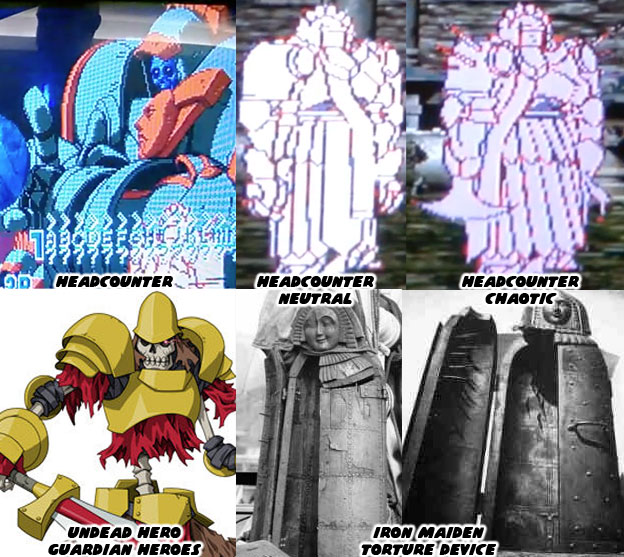
Mr. Obari and his team got far along in the development process but not far enough so that some other developer could pick up and finish the title. Despite the number of stages, cut scenes and near-finished characters there was still plenty of work to do. They still had to finish the moves for the existing characters and create sprites and animations for the missing ones. They had to come up with a final boss, if not several final bosses and ending stories as well. This could have added another year in production plus several months polishing and balancing the mechanics. This was something that neither Technos nor SNK could afford. They needed game ready to go while fighting games were hot.
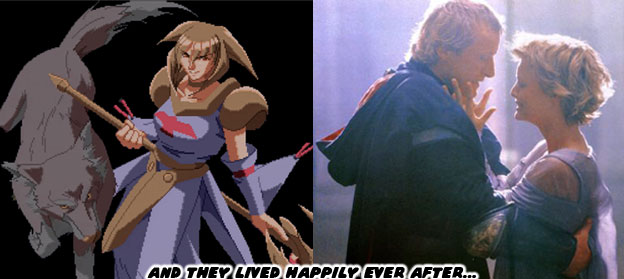
What would have become of the cast? Would they have returned for a sequel? Was this meant to be a one-shot fighting game? Would this series have crossed over with any other game? While we may never know the full scope of what Mr. Obari had planned we should appreciate the work that went into his game. We should be grateful that NeoTurfMasta was able to get a board running so that we could appreciate "what might have been" 20 years later. In this way I'd like to think that the plans and dreams of Mr. Obari and his team can now live happily ever after. As always if you enjoyed this blog and would like to sponsor me please visit my Patreon page and consider donating each month, even as little as $1 would help make better blogs and even podcasts!

No comments:
Post a Comment